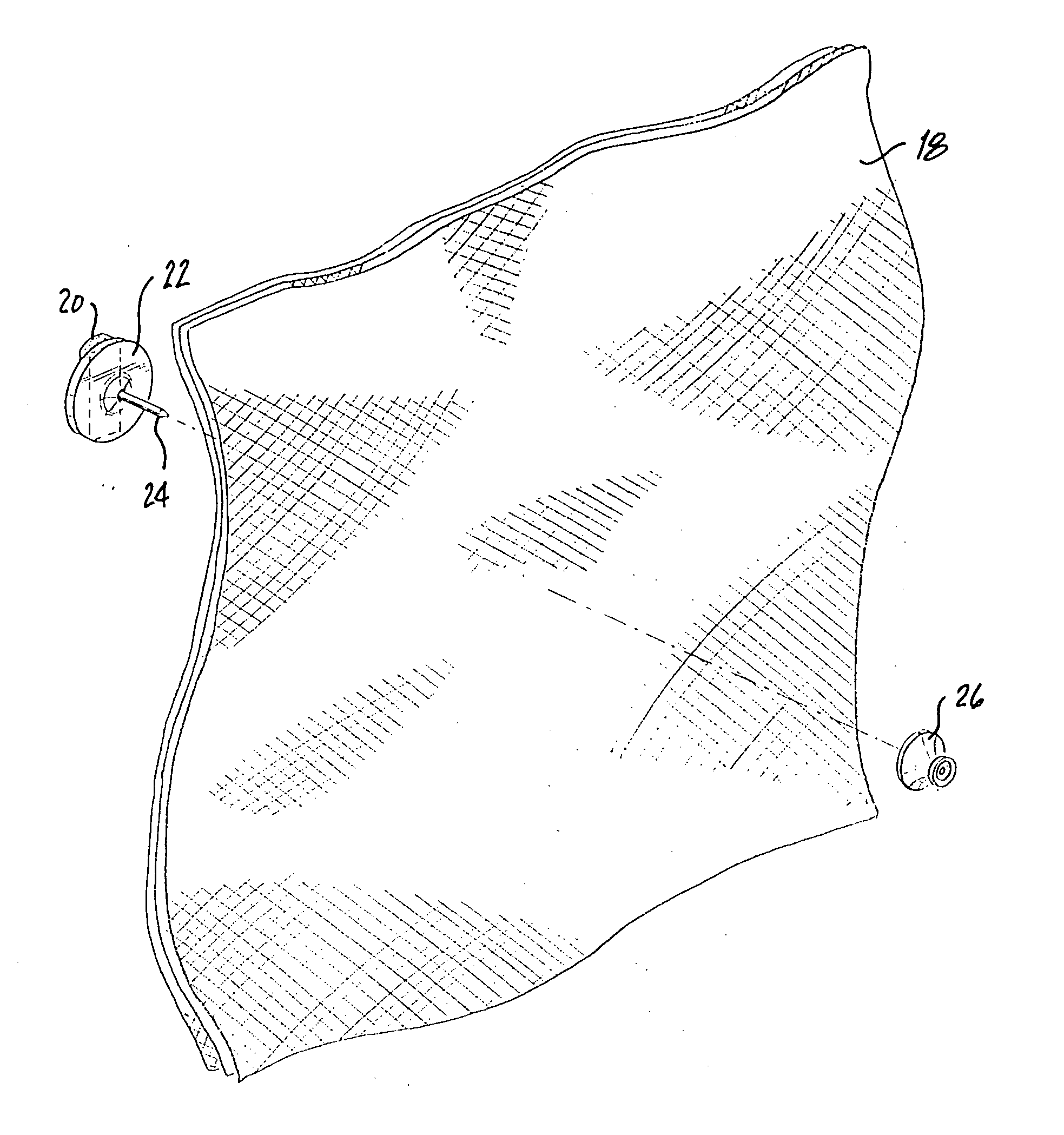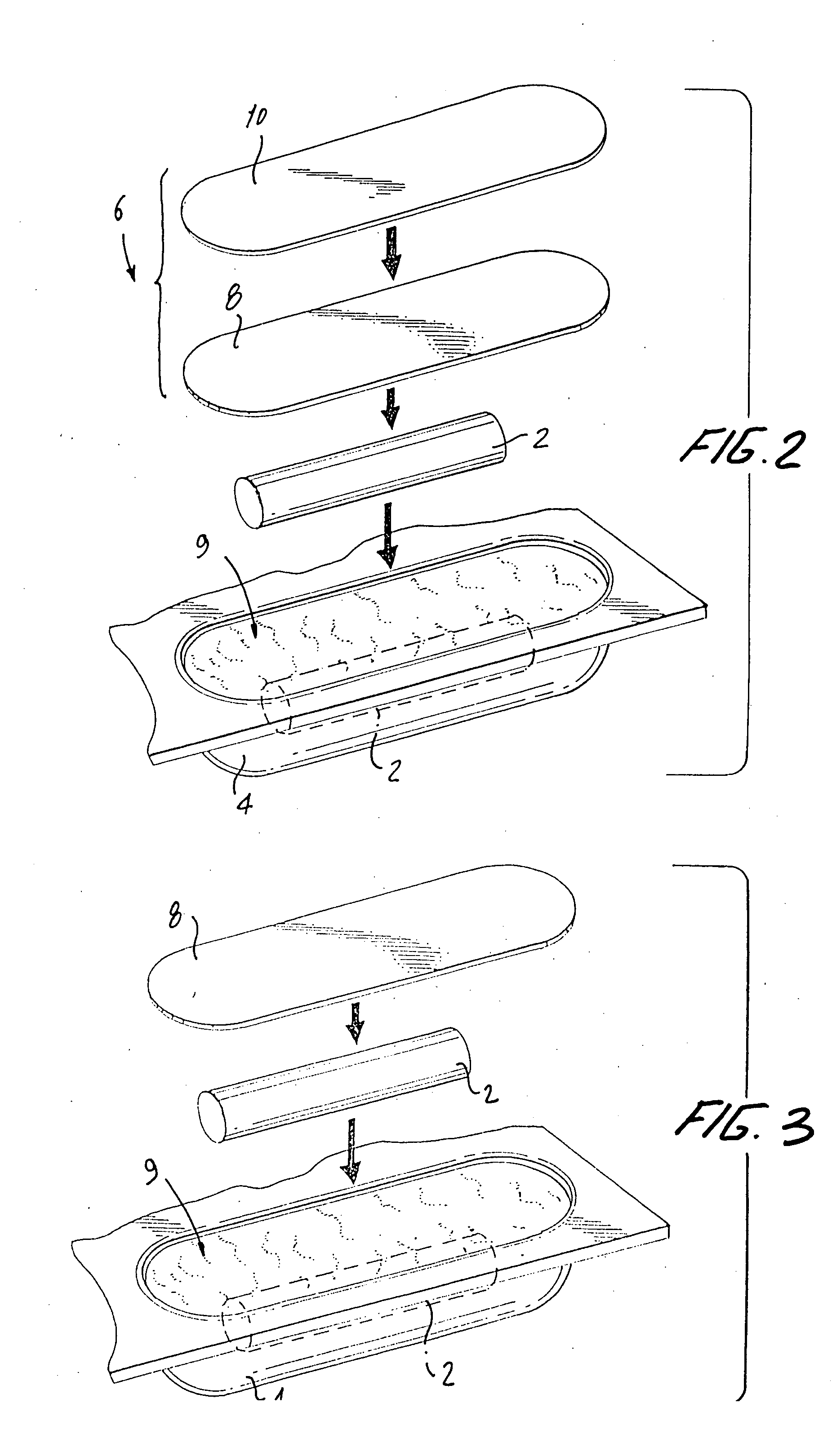Transponder assembly and method for making same
a transponder and assembly technology, applied in the field of transponders, can solve the problems of infection source, trouble, and inability to reliably secure the transponder, and achieve the effects of low cost, reliable transponder assembly, and low production cos
- Summary
- Abstract
- Description
- Claims
- Application Information
AI Technical Summary
Benefits of technology
Problems solved by technology
Method used
Image
Examples
Embodiment Construction
[0019] Transponder—devices capable of receiving a radiation signal and transmitting a radiation signal in response—are readily available in sizes capable of being used in connection with this invention. The basic transponder assembly of the present invention comprises a transponder 2, here shown as a small cylinder, embedded in and substantially covered by a plastic mass 4 attached to a base 6 the exposed surface of which is adhesive in character. The base 6 preferably comprises a double-faced adhesive strip 8 secured either directly or indirectly to an exposed surface of plastic mass 4. If desired for improved structural reliability, and as shown in FIG. 2, a strip 10 of suitable structural material such as metal may be interposed between the adhesive strip 8 and the plastic mass 4, being secured to the plastic. Alternatively, and as illustrated in FIG. 3, the metal strip 10 may be omitted, the adhesive strip 8 being applied directly to the plastic mass 4.
[0020] These individual a...
PUM
 Login to View More
Login to View More Abstract
Description
Claims
Application Information
 Login to View More
Login to View More - R&D
- Intellectual Property
- Life Sciences
- Materials
- Tech Scout
- Unparalleled Data Quality
- Higher Quality Content
- 60% Fewer Hallucinations
Browse by: Latest US Patents, China's latest patents, Technical Efficacy Thesaurus, Application Domain, Technology Topic, Popular Technical Reports.
© 2025 PatSnap. All rights reserved.Legal|Privacy policy|Modern Slavery Act Transparency Statement|Sitemap|About US| Contact US: help@patsnap.com



